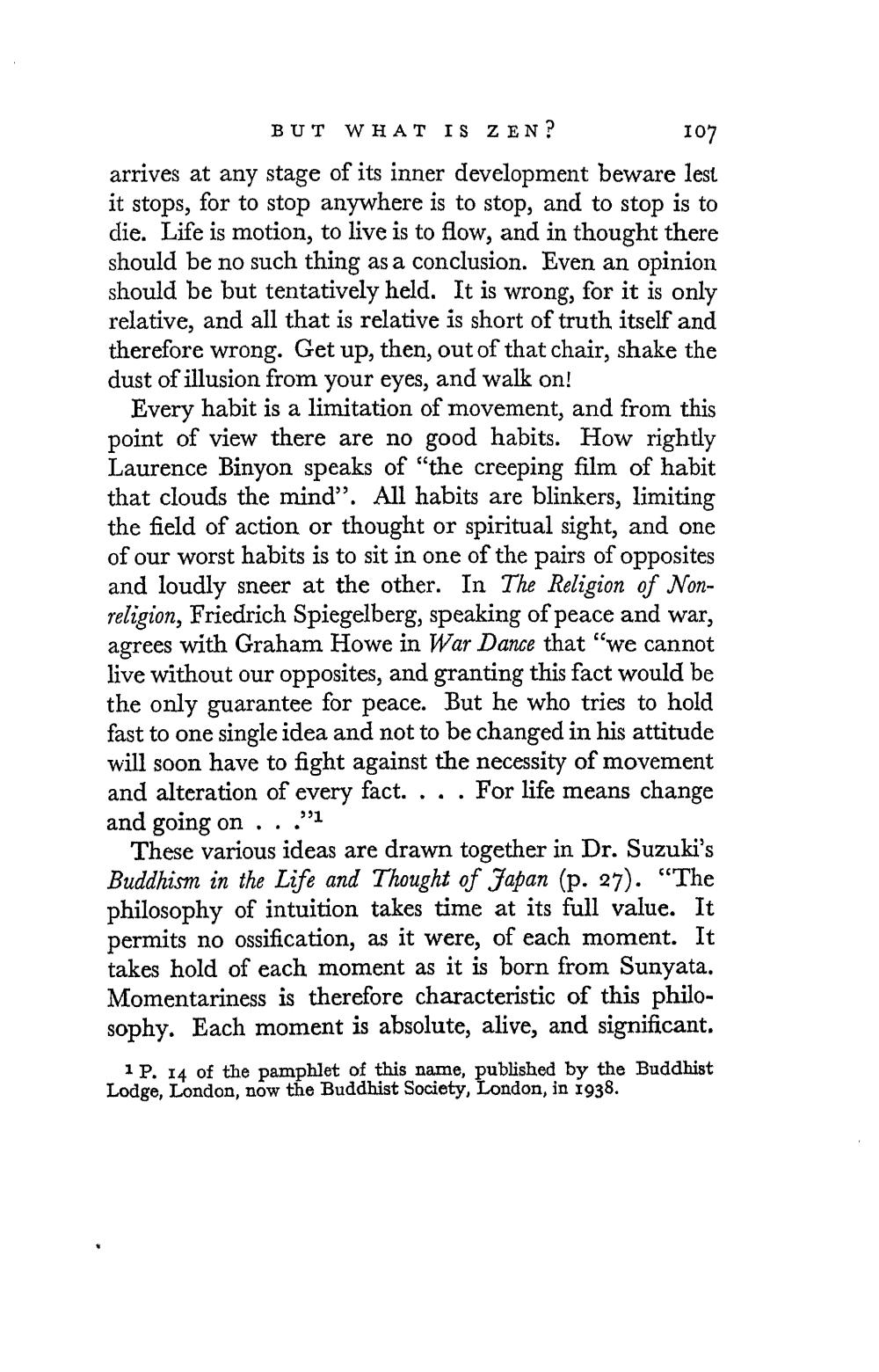________________
BUT WHAT IS ZEN?
107 arrives at any stage of its inner development beware lest it stops, for to stop anywhere is to stop, and to stop is to die. Life is motion, to live is to flow, and in thought there should be no such thing as a conclusion. Even an opinion should be but tentatively held. It is wrong, for it is only relative, and all that is relative is short of truth itself and therefore wrong. Get up, then, out of that chair, shake the dust of illusion from your eyes, and walk on!
Every habit is a limitation of movement, and from this point of view there are no good habits. How rightly Laurence Binyon speaks of "the creeping film of habit that clouds the mind". All habits are blinkers, limiting the field of action or thought or spiritual sight, and one of our worst habits is to sit in one of the pairs of opposites and loudly sneer at the other. In The Religion of Nonreligion, Friedrich Spiegelberg, speaking of peace and war, agrees with Graham Howe in War Dance that "we cannot live without our opposites, and granting this fact would be the only guarantee for peace. But he who tries to hold fast to one single idea and not to be changed in his attitude will soon have to fight against the necessity of movement and alteration of every fact. . . . For life means change and going on ..."1
These various ideas are drawn together in Dr. Suzuki's Buddhism in the Life and Thought of Japan (p. 27). “The philosophy of intuition takes time at its full value. It permits no ossification, as it were, of each moment. It takes hold of each moment as it is born from Sunyata. Momentariness is therefore characteristic of this philosophy. Each moment is absolute, alive, and significant.
1 P. 14 of the pamphlet of this name, published by the Buddhist Lodge, London, now the Buddhist Society, London, in 1938.




